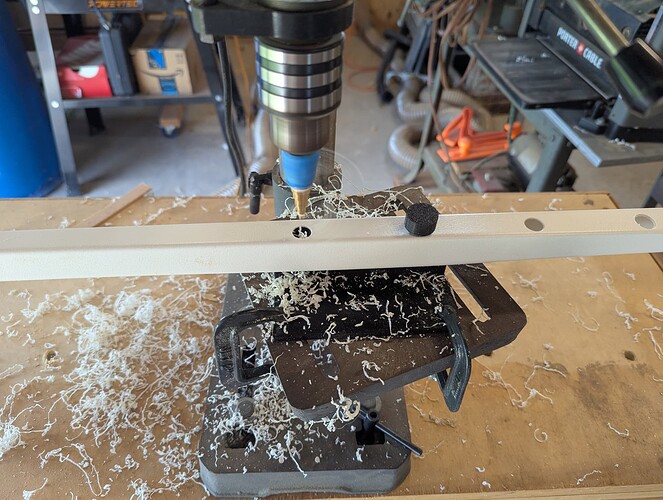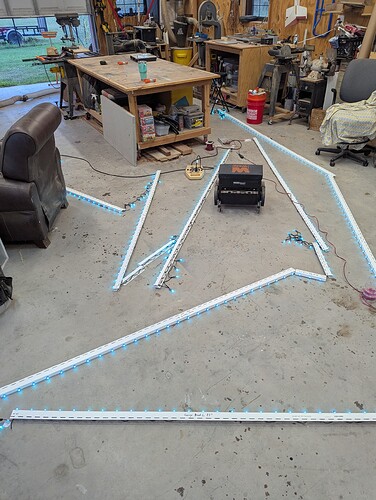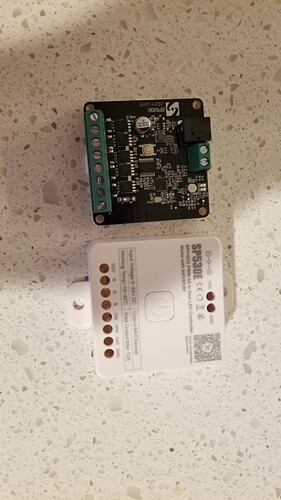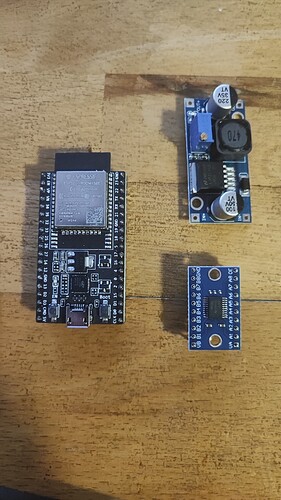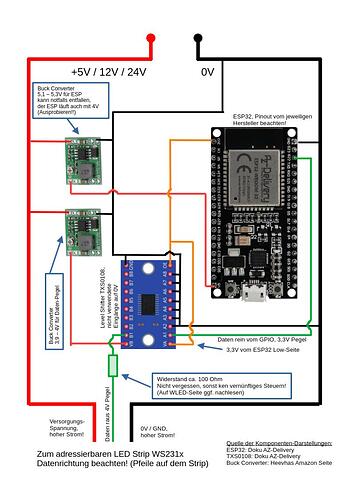I bought one of those new controllers to hang some lights on my daughter’s bunk bed. They worked right away. But I still flashed new firmware on it. Maybe I’m paranoid, but I prefer open source when I have a chance.
The controller upgraded with the stock wled binary through the app. No custom firmware on this one.
Fun afternoon in the shop drilling holes and wiring up LEDs. I still need to cut out all the extra LEDs and hook up waterproof connectors.
The 3d printed hole template worked well.
Lots of testing.
Nice! Neat jig for making the holes fast/consistent. Great idea to test everything while on the ground.
That sounds convenient, which controller did you end up with?
Asking because am not content with the features, IP rating and price of the BTF lighting SP530E am thinking of using.
I ended up with some of these.
Why am I building my own for much more money? ![]()
What are you building? My controllers consist of an esp8266 or esp32 with espixelstick or wled firmware (depends on the purpose of the led string)
That’s basically it, following this guide:
Not sure why I’d need the level shifter though. Also, I don’t have the fuses.
I use mostly 5V leds. For the 12 volt LED’s I had some problems without level shifter (didn’t know I needed one back then). I had luck with using 2 meters of 1 core of a utp cable, still don’t know why that works though.
Nowadays I use a single 5v led as a level shifter or a null pixel buffer that i have laying around for other purposes.
You can get by without the level shifter sometimes with WS2812s, but they are definitely needed for WS2815.
If you start getting issues where the lights aren’t displaying the correct colors, or there’s a spot with some random colors, it’s because the data signal isn’t strong enough and needs to be shifted.
I’m not sure what makes the difference, but some people have problems and some don’t. I couldn’t run my WS2815s at all without one.
The WLED guys will tell you it’s a must.
I’ve got 2811s… ![]()
It has to do with the treshhold of the pixel chip (2811/12/15). The dataline of each of the chips is 5 V. The esp has only 3.3V outputs. Sometimes that is high enough to trigger the chip in believing the difference between a 0 and 1, sometimes not. The 12v chips are often more sensible. The 5 V I’ve used are not.
Yeah, I get that, I’m just not sure what affects it that makes it work sometimes, and sometimes not.
Maybe it’s the quality of the ESP? not sure.
I’ve seen the WLED guys swear you need the level shifter for any of them to work at all, some people say they’ve never had to use them with WS2812s, and I’ve seen mixed on the WS2815s.
In my case, without the level shifter, my string was a flickering rainbow of LEDs without it.
Edit: I should have followed the link… I didn’t use that specific device. I read somewhere that you could treat the first pixel like a null buffer and that’s what I did. My understanding is that each pixel has a built-in transmitter and relays the data string to the next pixel. So if you can get the first pixel to ‘read’ the data line, then it will retransmit at full power to the next one. Something about the data line not being full power causes that first LED to ‘run dim’ or slightly off, I don’t remember specifics, but you basically ignore that pixel in your LED math since it doesn’t really light up correctly.
I’ve used this on a few projects to drive pixels straight from Esp32. It worked better if the null pixel is really close to the board. The string I used had cut marks every 3 pixels. I cut it at the mark and put the first 3 pixels inside the case with the Esp32. Then I ran the line out to the actual pixels you could see. My code had a “skip 3” in it so the first 3 pixels were never lit. On one project I did use one of the box pixels as a status led.
I’ve used one of these also as null-pixel. Drove a 25x25x25 meter triangle with it.
I used two strings to drive the ws2811 leds (3 leds per pixel) These were 12 V. I used FPP as controller.
My mental model is that it has a lot to do with the amount of wire between the esp and the first pixel. If you put the pixel buffer or level shifter right next to the esp, then the 30ft of cable to the actual first pixel, the voltage drop and spreading of the signal won’t be as pronounced. If you have a very short cable and connect it right up to the esp, it will be fine.
My permanent house lights have a level shifter. The ones I put under my kitchen counter or my led tree topper don’t have a level shifter.
I had about 3cm of wire between the ESP and the WS2815 and it wouldn’t work.
It worked fine for the WS2812s in the same test on my bench. ![]()
I ended up ordering the level shifters and by the time they came in, never got back to finishing the project…
Sounds familiar to me ![]()
This is what I have so far. I really, really dread the soldering of the level shifter… there are so many and they are so tiny…
This guy actually uses two buck converters, though that sounds excessive… ![]()
Should just have bought this:
![]() Same cost basically… No soldering.
Same cost basically… No soldering.
